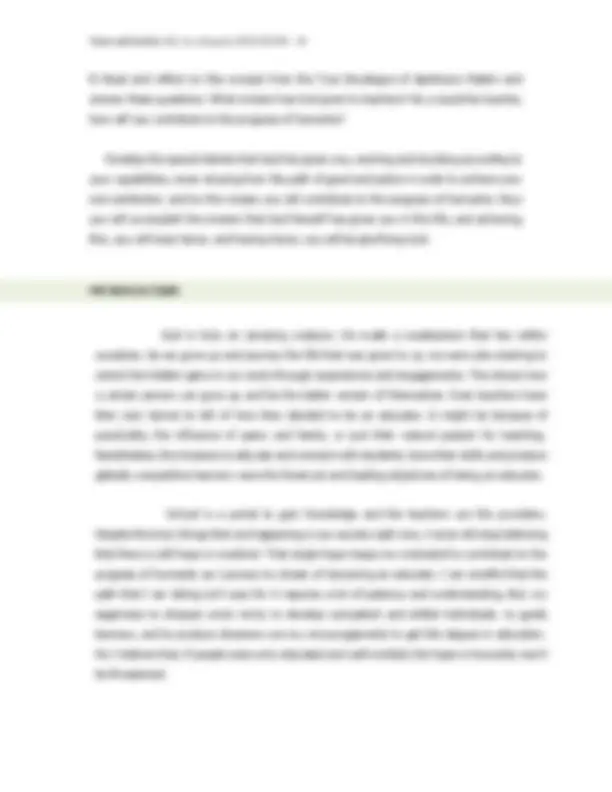





Study with the several resources on Docsity

Earn points by helping other students or get them with a premium plan


Prepare for your exams
Study with the several resources on Docsity

Earn points to download
Earn points by helping other students or get them with a premium plan
Community
Ask the community for help and clear up your study doubts
Discover the best universities in your country according to Docsity users
Free resources
Download our free guides on studying techniques, anxiety management strategies, and thesis advice from Docsity tutors
Kay sir obed ni sya Basta amo na sya guys need gid abi lawig ni
Typology: Summaries
1 / 6

This page cannot be seen from the preview
Don't miss anything!




B. Read and reflect on this excerpt from the True Decalogue of Apolinario Mabini and answer these questions: What mission has God given to teachers? As a would-be teacher, how will you contribute to the progress of humanity? Develop the special talents that God has given you, working and studying according to your capabilities, never straying from the path of good and justice in order to achieve your own perfection, and by this means you will contribute to the progress of humanity: thus you will accomplish the mission that God himself has given you in this life, and achieving this, you will have honor, and having honor, you will be glorifying God. MY REFLECTION God is truly an amazing creature. He made a masterpiece that lies within ourselves. As we grow up and journey the life that was given to us, we were also starting to unlock the hidden gems in our souls through experiences and engagements. This shows how a certain person can grow up and be the better version of themselves. Even teachers have their own stories to tell of how they decided to be an educator. It might be because of practicality, the influence of peers and family, or just their natural passion for teaching. Nonetheless, the missions to educate and connect with students, hone their skills and produce globally competitive learners were the foremost and leading objectives of being an educator. School is a portal to gain knowledge and the teachers are the providers. Despite the toxic things that are happening in our society right now, I never did stop believing that there is still hope in mankind. That single hope keeps me motivated to contribute to the progress of humanity as I pursue my dream of becoming an educator. I am mindful that the path that I am taking isn’t easy for it requires a lot of patience and understanding. But, my eagerness to sharpen one’s mind, to develop competent and skilled individuals, to guide learners, and to produce dreamers are my encouragements to get this degree in education. For I believe that, if people were only educated and well-molded, the hope in humanity won’t be threatened.
A. Which of the stories above inspired/touched you most? Why? What realizations and/reflections in relation to the stories of the Filipino teachers that you have? MY REFLECTION